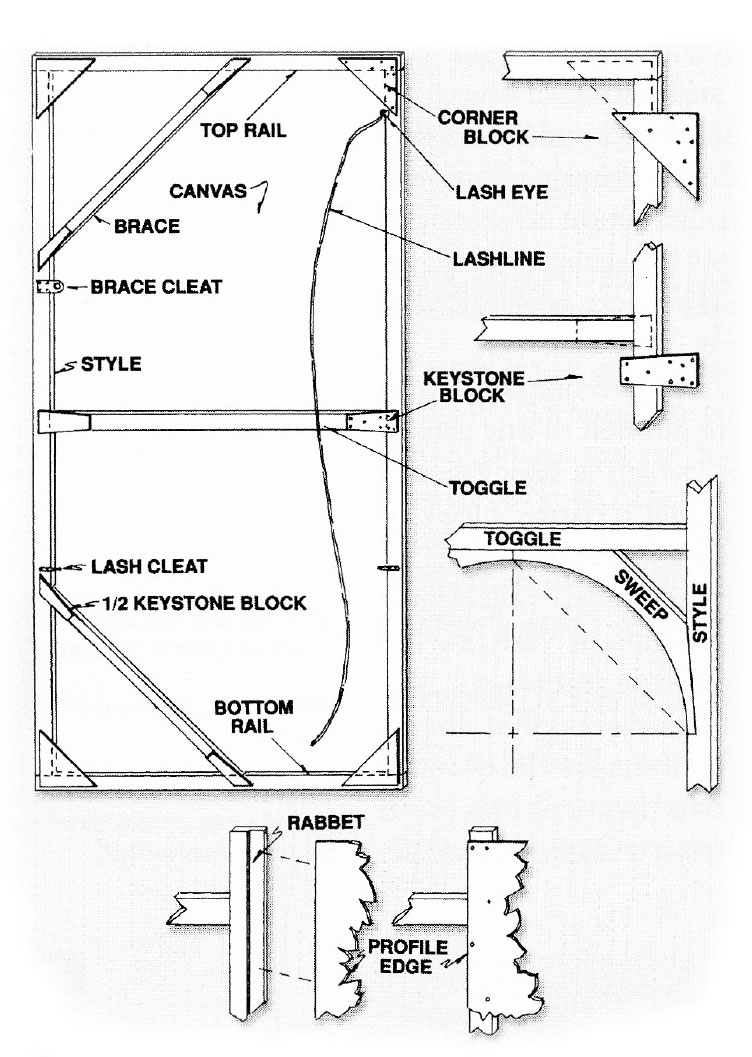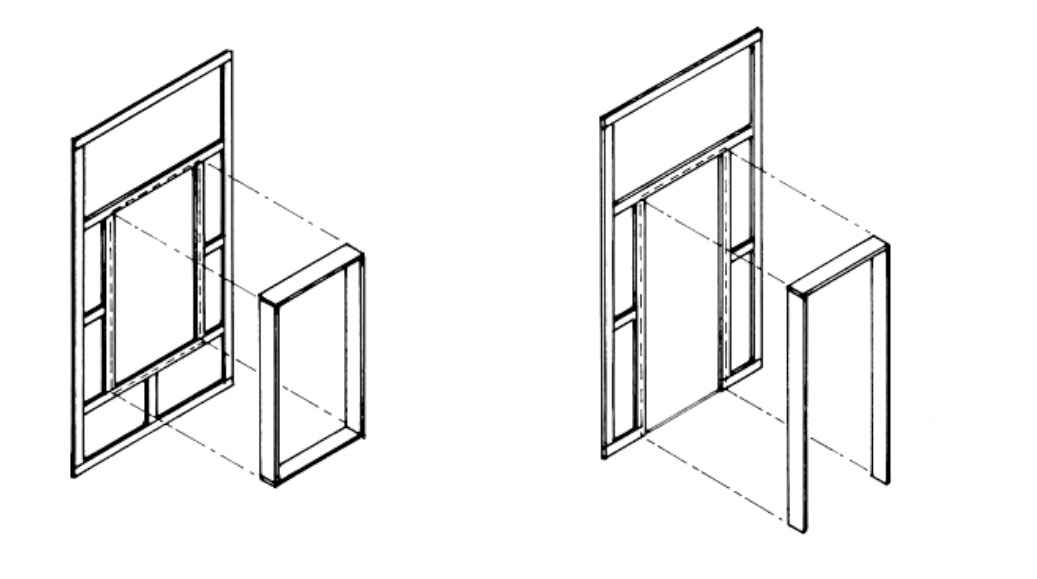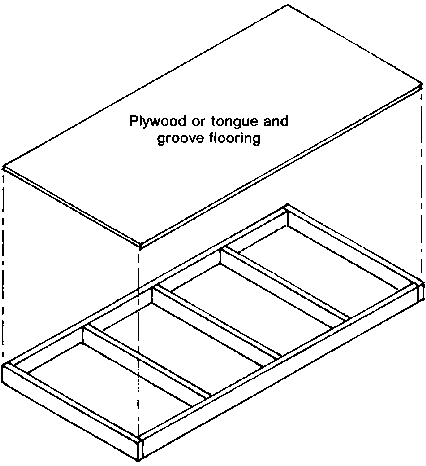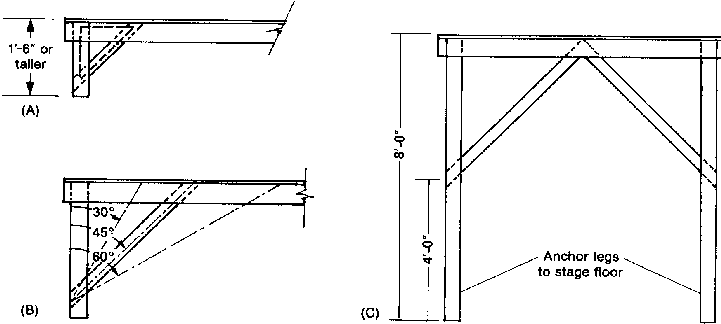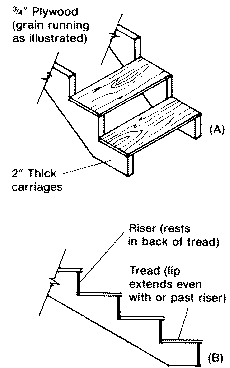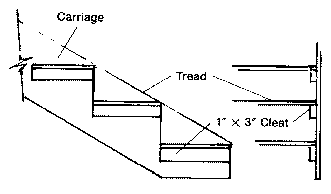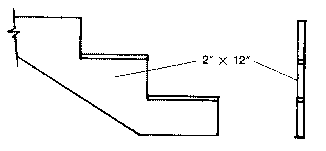Scenery
Scenery is a staple of technical theatre components and can make an incredible impact on a production. The PAC Shop has a fully functioning work space complete with tools and materials for designing and constructing scenery. PAC Shop staff are equipped to offer advice and support.
- Hand Tools
- Measuring: Tape Measure, Framing Square, Tri Square, Protractor, Level
- Marking tools: Pencils, chalk line, scribe, compass
- Hammers
- Cutting tools: Saws, utility knife, scissors, tin snips, chisels, planes/rasp, files
- Clamping tools: Vises, bar clamp, c-clamp, quick-grip, vise gripes, band clamps, pliers, wrenches
- Screwdrivers: Standard, Phillips, nut drives, ratchet screwdriver
- Misc.: Wrecking bar, nail puller, grommet set, staple guns, bolt cutter, pipe cutter, Tap and Die set
- Power Tools
- Stationary: Table Saw, Radial Arm Saw, Band Saw, Drill Press, Bench Grinder
- Power Hand Tools: Circular Saw, Saber Saw, Electric Hand Drill, Belt Sander, Plam Sander, Router, Hand Grinder
- Pneumatic Tools: Air Compressor, Pneumatic Staplers, Pneumatic Nailer
- Stock Lumber
All stock lumber is graded. There are two primary grades of wood, select and common. Common grade is typically used for scenic construction.- Select Wood is free of all knots, blemishes, erratic graining and warps.
- No. 1 Common Lumber can have knots up to 1-1/2 inches. Knots do not have to be tight and may fall out. Warping and twisting are more prevalent in this grade.
- No.2 Common The knots can be greater than 1-1/2 inches, and the edges can show an occasional strip of bark. The wood will probably be warped and twisted
- Dimensions of Stock Lumber The Department of Agriculture determines the standards for the thickness, width, and length of all stock lumber sold in the US. Since the sizing is done before the boards are milled to a smooth surface, the actual dimensions of the lumber are smaller that the indicated size. Slight variations in the actual dimensions can be measured on almost any piece of stock because of milling variations and shrinkage. Measure Twice, Cut Once. Typical sizes shown here.
- Nails
- Screws
- Staples
- Bolts and nuts
- Glues and Adhesive
- Hinges
- Flying/Rigging Hardware
- Bracing Hardware
- Casters
- Safety glasses and goggles
- Hearing protection
- Dust Masks
- Respirator
- Work Gloves
- First Aid kits
Lighting
The PAC Shop maintains a small stock of lighting equipment for use by participating PAC groups. All PAC groups have access at no charge to these materials (depending on equipment availability). In order to be able to fairly distribute the resources, the following guidelines are used :
- Any articles used must be signed out and the person/group taking the props must assume full responsibility for the articles taken. If any articles are removed without permission a $25 fine will be charged to the group or individual.
- If a borrowed article is lost or damaged, the borrowing group must either replace, repair, or pay the replacement value of the item.
- Equipment can be requested by contacting the PAC Shop directly.
- All borrowed items must be returned at the strike or after the last performance. PAC Shop will be present to supervise the return and ensure the equipment is returned in working order. You will receive an email the day before your performance to confirm the date and time of equipment return.
- All cables must be neatly wrapped, tied, and free of tape/tape residue upon return.
- Chauvet LED’s
- Altman Fresnels and Lekos
- Assorted Gobos
- Gels
- Top Hats
- Barn Doors
- DMX to USB Controller
- DMX Cables – 3 and 5 pin
- Lighting trees
Green Screen/Recording
The PAC Shop maintains a small stock of equipment for photo shoots and recordings. Equipment is available on a first come, first serve basis.
- 1 – 10′ wide x 20′ long green screen that is permanently hung in the PAC Shop.
- This green screen requires extra set-up, and is not available during a PAC show season.
- 5 – 8′ wide x 10′ tall portable green screen kits with stands.
- White and Black backdrops are also available.
Sound
The PAC Shop maintains a stock of microphones and audio equipment for use by participating PAC groups. All PAC groups have access at no charge to these materials (depending on equipment availability). In order to be able to fairly distribute the resources, the following guidelines are used :
- Any articles used must be signed out and the person/group taking the props must assume full responsibility for the articles taken. If any articles are removed without permission a $25 fine will be charged to the group or individual.
- If a borrowed article is lost or damaged, the borrowing group must either replace, repair, or pay the replacement value of the item.
- Equipment can be requested on the tech rider, or by contacting the PAC Shop directly. You will receive a confirmation email the Thursday before your show week to arrange pickup of the microphones/equipment.
- All borrowed items must be returned at the strike or after the last performance. PAC Shop will be present to supervise the return and ensure the equipment is returned in working order. You will receive an email the day before your performance to confirm the date and time of equipment return.
- All body mics and cables must be neatly wrapped, tied, and free of tape/tape residue upon return.
- The PAC Shop does not provide batteries, tape, or sweat-proofing materials.
- Shure Wireless Handhelds and Lavaliers
- Clip on Wired Instrument Mics (Brass, Drums, Saxophones)
- Drum Kit mics with appropriate clips/stands
- Shure SM 57 Wired mics (typically for instruments)
- Ear mics or clip on lavalier mics (for musicals)
- 16 Channel Analog board
- 8 Channel Analog board
- 2 Powered speakers with stands
- 1 and 2 Channel DI Boxes
- 2 Channel Audio interfaces
- Pop Filters
- Vocal Recording mics
- Cables (snakes and XLR’s)
- Small Selection of Mic Stands.
Furniture
The PAC Shop maintains the stock props and furniture for use by participating PAC groups. All PAC groups have access at no charge to these materials. In order to be able to fairly distribute the resources of PAC Props, the following guidelines are used :
- No one shall enter the furniture storage areas without permission. Please contact the PAC Shop to schedule an appointment.
- Any articles used must be signed out and the person/group taking the props must assume full responsibility for the articles taken. If any articles are removed without permission a $25 fine will be charged to the group or individual.
- If a borrowed article is lost or damaged, the borrowing group must either replace, repair, or pay the replacement value of the item.
- All borrowed items must be returned at the strike of the performance. PAC Shop Staff will be present at the strike to supervise the return and ensure the props and furniture areas are left in good condition.
- If a group is purchasing large furniture (sofas, dining room tables, beds), please check with the PAC Shop BEFORE purchasing, so that the shop and group can plan storage for the item.
Props
The PAC Shop maintains the stock props and furniture for use by participating PAC groups. All PAC groups have access at no charge to these materials. In return, we request that any group that uses PAC Props donates any new properties they purchase to the stock. The Prop Shop contains treasures beyond your imagination. In order to be able to fairly distribute the resources of PAC Props, the following guidelines are used :
- No one shall enter the prop or furniture storage areas without permission. Please contact the PAC Shop to schedule an appointment.
- Any articles used must be signed out and the person/group taking the props must assume full responsibility for the articles taken. If any articles are removed without permission a $25 fine will be charged to the group or individual.
- If a borrowed article is lost or damaged, the borrowing group must either replace, repair, or pay the replacement value of the item.
- All borrowed items must be returned at the strike of the performance. PAC Shop Staff will be present at the strike to supervise the return and ensure the props and furniture areas are left in good condition.
- The PAC Shop has a Cricut available for prop-making. We supply the knives and unit, but the user will need to supply the materials (paper, vinyl, etc). Please let us know when you’re in the shop if you would like to use it. The unit can not leave the shop.

